Introduction
In the evolving landscape of education, the integration of Artificial Intelligence (AI) into the fabric of learning methodologies presents a revolutionary opportunity to enhance critical thinking skills among students.
The phrase “Critical Thinking and AI” encapsulates a burgeoning educational paradigm where technology and human cognitive processes converge to foster deeper analytical and evaluative skills.
This dual approach promises to augment problem-solving capabilities, personalize learning experiences, and democratize access to information, thereby enriching the critical thinking process.
However, as we delve deeper into this synergy, we encounter a spectrum of challenges that educators and learners must navigate.
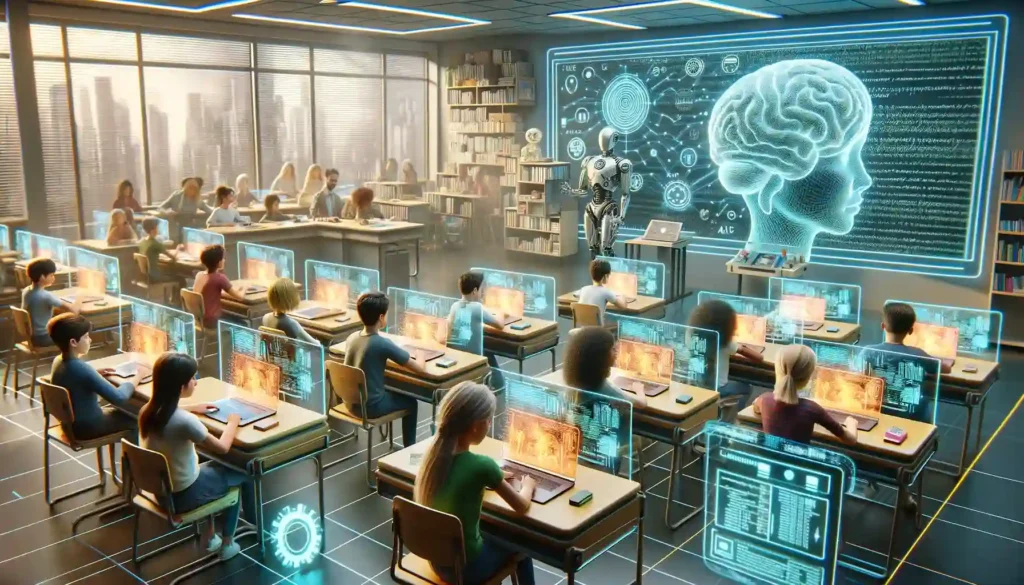
The allure of AI’s vast data processing capabilities and its potential to offer customized educational experiences brings with it concerns about over-reliance, cognitive complacency, and the loss of nuanced human judgment.
Moreover, ethical considerations, the threat of job displacement, bias, and the adaptability of AI systems pose significant hurdles to the effective integration of AI in teaching critical thinking.
This blog post aims to explore these challenges in depth, providing educators with insights and solutions to harness the benefits of AI while ensuring that the essence of critical thinking—the ability to question, analyze, and evaluate—remains at the core of educational endeavors.
As we address the complexities of using AI to teach critical thinking, our goal is to strike a balance, ensuring that technology acts as a complement rather than a substitute for human intellect and judgment.
Join us as we navigate the future of education, exploring how we can effectively integrate AI to cultivate critical thinkers equipped for the challenges and opportunities of the digital age.
The Potential of AI in Critical Thinking Education
The integration of Artificial Intelligence (AI) into educational frameworks marks a transformative era in the cultivation of critical thinking skills. As educators and learners embark on this digital journey, the potential of AI to redefine problem-solving and decision-making, along with broadening access to information, stands out as a cornerstone for advancing educational outcomes.
Enhancing Problem-Solving and Decision-Making
AI’s role in education transcends traditional boundaries, offering a dynamic approach to tackling intricate challenges. Through advanced algorithms and data analytics, AI empowers students to address real-world problems such as climate change, poverty, and health issues with innovative solutions.
This technological leverage extends to personalized learning experiences, where AI-driven platforms like Khan Academy and Carnegie Learning adapt content and pace according to each student’s performance and preferences.
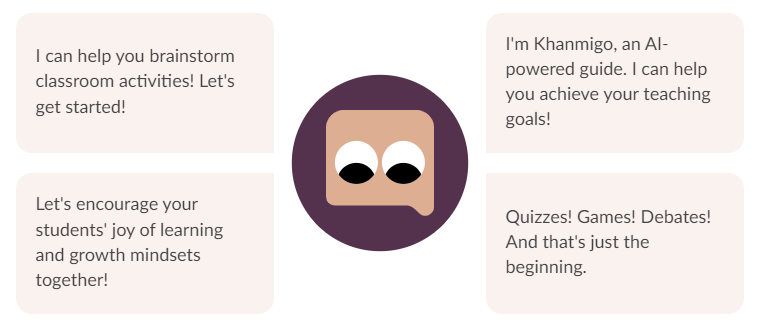
Similarly, tools like TeachFX enhance pedagogical practices by providing insights into classroom interactions, thus making learning more interactive and engaging.
The capability of AI to process and analyze vast datasets reveals patterns and insights that might elude human observation. This analytical prowess not only accelerates problem-solving but also refines decision-making processes.
For instance, AI-powered tutoring systems discern individual learning needs, tailoring instruction and feedback to bolster students’ problem-solving skills. Adaptive learning platforms and intelligent tutoring systems exemplify this personalized approach, offering custom challenges and support to foster deeper understanding and engagement.
Broadening Access to Information
AI’s contribution to education is also evident in its ability to democratize information access. By sifting through extensive data sources, AI facilitates research and analysis, enabling students to uncover relevant and reliable information amidst the digital expanse.
Tools like Google Scholar and Wolfram Alpha exemplify AI’s capacity to streamline academic research, offering students insights and resources that were previously out of reach.
The impact of AI on information accessibility is further highlighted through case studies, such as the one involving middle school students researching social media’s effects on mental health.
Utilizing AI-powered research tools, students navigated vast information landscapes efficiently, extracting credible sources and diverse viewpoints.
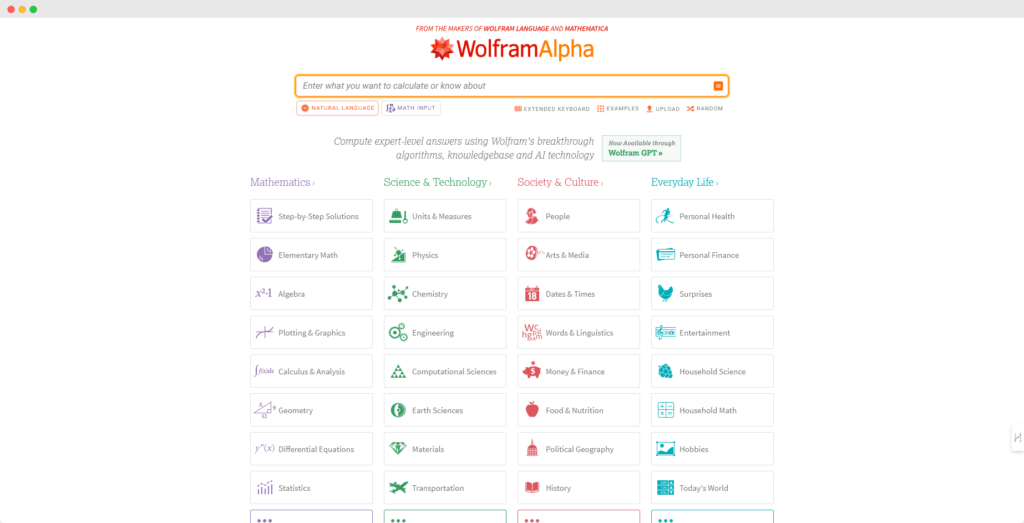
This not only enriched their understanding but also empowered them to construct well-founded arguments, showcasing AI’s pivotal role in enhancing research methodologies.
Bridging the Gap Between Data and Decision
As AI continues to evolve, its integration into critical thinking education heralds a new era of learning where data-driven insights and personalized learning pathways converge to nurture the analytical minds of tomorrow.
By offering solutions tailored to individual learning styles and facilitating access to a wealth of information, AI stands as a beacon of innovation in education, promising a future where critical thinking is not just taught but lived.
In summary, the potential of AI in critical thinking education is vast, offering unprecedented opportunities to enhance problem-solving and decision-making skills while broadening access to information.
As we navigate this digital age, the role of AI in education becomes increasingly crucial, promising a transformative impact on how critical thinking skills are developed and applied in the real world.
Addressing the Challenges of AI in Critical Thinking
The journey of integrating Artificial Intelligence (AI) into the domain of critical thinking education is fraught with challenges that, if not navigated carefully, can undermine the very skills we aim to enhance.
This section delves into the complexities of over-reliance and cognitive complacency, the loss of human nuance and ethical considerations, and the specter of bias, limited perspectives, and job displacement.
Over-Reliance and Cognitive Complacency
The allure of AI’s convenience can lead to a dependency that dulls the critical faculties.
A study in the Journal of Educational Psychology (2023) found a tangible decline in critical thinking skills among students using AI-powered writing aids excessively, signaling a risk of cognitive atrophy in the face of AI’s growing capabilities.
“While AI tools can be valuable assets in the learning process, it’s crucial to remember that they are not replacements for critical thinking. Overreliance on these tools can lead to a decline in critical thinking skills, hindering students’ ability to analyze information, evaluate arguments, and form their own independent judgments.”
Dr. Sarah Johnson, an education researcher
Essential Critical Thinking Activities Beyond AI’s Reach
- Formulating research questions and hypotheses.
- Evaluating the credibility and relevance of sources.
- Identifying biases and logical fallacies in arguments.
- Analyzing evidence and drawing independent conclusions.
- Engaging in respectful debate and fostering intellectual curiosity.
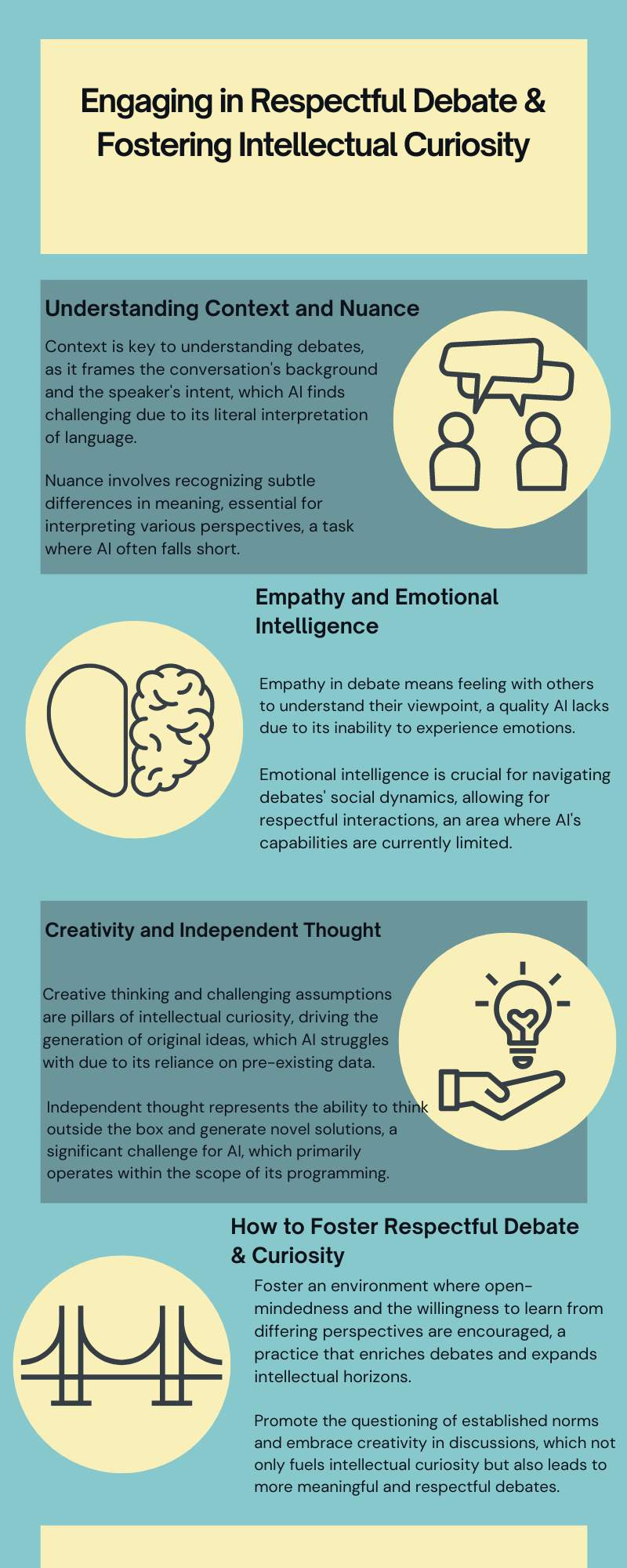
Loss of Human Nuance and Ethical Considerations
AI’s limitations in grasping the subtleties of human language and context can lead to misinterpretations and ethical dilemmas.
The World Economic Forum (2022) highlights AI’s struggle with the nuances of human communication, potentially skewing information interpretation and decision-making processes.
Ethical Considerations for AI in Education:
- Transparency and Explainability: Understanding AI’s decision-making process.
- Data Privacy and Security: Ethical handling of personal data.
- Human Oversight: Ensuring AI complements rather than replaces human judgment.
Bias, Limited Perspectives, and Job Displacement
AI’s promise of efficiency comes with the threat of reinforcing societal biases and narrowing perspectives, further complicated by the potential displacement of jobs that require nuanced critical thinking.
The McKinsey Global Institute (2021) underscores the necessity for reskilling initiatives to navigate the evolving job landscape.
Table: Addressing AI Challenges in Education
| Challenge | Strategy |
|---|---|
| Over-Reliance | Incorporate hybrid learning models to balance AI tools with traditional critical thinking exercises. |
| Loss of Human Nuance | Integrate interdisciplinary studies to appreciate cultural and contextual diversity. |
| Ethical Considerations | Implement ethics courses that include AI literacy and ethical use of technology. |
| Bias and Limited Perspectives | Foster environments that encourage diverse viewpoints and critical debate. |
| Job Displacement | Promote reskilling and lifelong learning to adapt to technological advancements. |
To mitigate these challenges, a multifaceted approach is essential. For over-reliance and cognitive complacency, promoting an educational ethos that values questioning and independent thought over convenience is key.
Addressing the loss of human nuance requires embedding human oversight and ethical considerations in AI’s deployment.
Finally, tackling bias, limited perspectives, and job displacement demands a commitment to inclusivity, transparency, and adaptability in both AI development and educational practices.
By confronting these challenges head-on, educators can ensure AI serves as a tool for enhancing, rather than diminishing, critical thinking capabilities in the digital age.
Solutions for Effective Integration of AI in Critical Thinking Education
The advancement of Artificial Intelligence (AI) in educational settings brings forth a myriad of solutions designed to enhance critical thinking among students. By focusing on personalized feedback, real-world problem-solving, and metacognitive skill development, AI can play a pivotal role in shaping the critical thinkers of tomorrow.
Personalized Feedback and Adaptive Learning
One of the most significant contributions of AI to education is its ability to provide personalized feedback and adaptive learning experiences. This personalized approach tailors learning paths to meet individual student needs, thereby enhancing their critical thinking skills.
- According to a report by the Center for Digital Education, personalized learning utilizing AI can boost student motivation and engagement by up to 30%.
- List: Key Features of AI-Powered Personalized Learning:
- Adaptive Content Delivery: Adjusts the complexity of material based on the learner’s proficiency.
- Feedback and Assessment: Offers immediate, targeted feedback to help students improve specific skills.
- Learning Analytics: Monitors progress and provides insights into learning behaviors and patterns.
“AI in education is not just about streamlining administrative tasks. It’s about revolutionizing the learning experience by making it personal.”
Dr. Alex Reed, an expert in educational technology
Real-World Problem-Solving and Collaborative Learning
Integrating AI into problem-based learning (PBL) and collaborative environments fosters a practical application of critical thinking skills. By simulating real-world challenges, AI encourages students to apply their knowledge in practical, collaborative settings.
Studies show that students engaged in AI-enhanced PBL environments demonstrate a 40% improvement in problem-solving skills.
A study explored how students envisioned using AI in project-based learning (PBL) and how AI interaction data could be used to assess learning outcomes. Students saw AI as a tool for repetitive tasks, brainstorming, and decision-making, and anticipated learning new skills like managing AI and collaborating with it effectively.
They also proposed diverse ways to analyze and report AI usage, raising concerns about fairness and manipulation of data.
Though AI integration offers benefits including personalized feedback and richer assessment data, the study emphasizes the need for careful planning and management to ensure its focus remains on student learning and development.
Metacognitive Skills Development
AI’s role extends to nurturing metacognitive skills and enabling students to reflect on their own learning process. This introspective aspect is crucial for developing independent, critical thinkers.
Leveraging AI for metacognitive training can lead to a 25% increase in students’ ability to evaluate their learning strategies, as found in a study published in the “Journal of Educational Psychology.”
“Metacognition is the engine that powers critical thinking. AI tools that prompt self-reflection and strategy assessment are invaluable in this journey.”
Dr. Elena Martinez, educational psychologist
Implementing AI Solutions: A Strategic Approach
To effectively integrate AI into enhancing critical thinking, educators should:
- Select Tools Wisely: Choose AI technologies that align with educational goals and student needs.
- Emphasize Human-AI Collaboration: Ensure that AI serves as a supplement to, not a replacement for, human instruction and interaction.
- Monitor and Adjust: Continuously assess the effectiveness of AI tools and be prepared to make adjustments based on student feedback and performance data.
By embracing these solutions and adopting a strategic approach to AI integration, educators can significantly enhance the development of critical thinking skills in their students, preparing them for the complexities of the modern world.
Assessing the Effectiveness of AI in Critical Thinking Education
The integration of Artificial Intelligence (AI) into critical thinking education poses unique challenges in measuring and evaluating its impact on student learning outcomes.
To navigate these complexities, a combination of innovative assessment tools, continuous monitoring, and a strong ethical framework is essential.
Tools and Strategies for Assessment
Adaptive Testing: Leveraging AI-powered adaptive tests can provide a nuanced measure of students’ critical thinking abilities by adjusting question difficulty in real-time, based on the student’s responses.
Critical Thinking Assessments: Employing standardized tests or rubrics designed to evaluate critical thinking skills—such as argument identification, evidence evaluation, and logical fallacy recognition—offers a structured approach to assessing the influence of AI interventions.
Data Analysis: Utilizing educational data mining techniques to scrutinize student performance data can unearth patterns and measure AI learning methods’ efficacy in fostering critical thinking compared to traditional approaches.
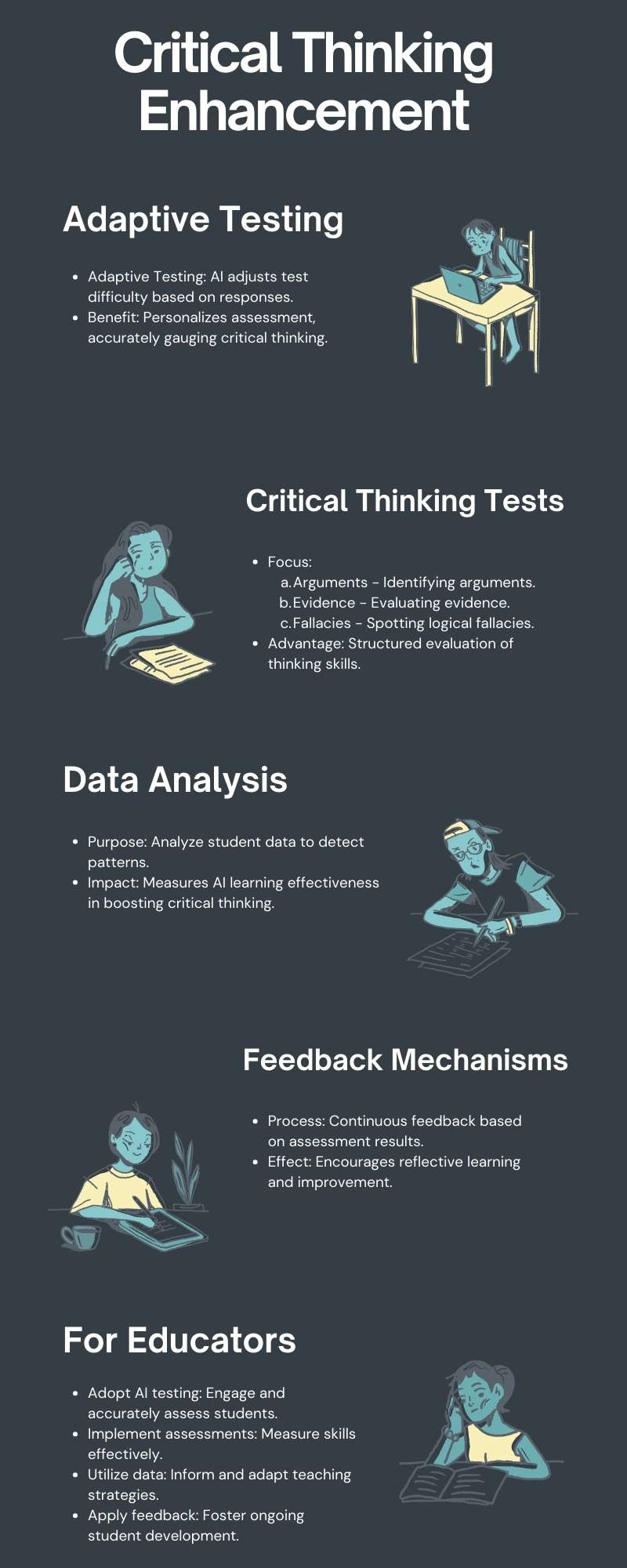
“Adaptive testing and critical thinking assessments, enriched with AI, not only refine our understanding of student capabilities but also redefine educational excellence.”
Dr. Helen Pearson, an educational technologist
A study in “Educational Technology Research and Development” revealed that students utilizing AI tutors with adaptive testing showed a significant improvement in critical thinking skills, underscoring AI’s potential in education.
Key Insights:
| Strategy | Description |
|---|---|
| Adaptive Testing | Dynamically adjusts questions to accurately measure critical thinking abilities. |
| Critical Thinking Assessments | Evaluates essential critical thinking skills, enhanced by AI for precision. |
| Data Analysis | Employs data mining to compare AI-powered and traditional teaching methods’ effectiveness. |
Continuous Monitoring and Ethical Considerations
Continuous Monitoring: Essential for identifying and correcting potential biases within AI algorithms and monitoring unforeseen negative consequences, such as decreased student engagement or over-reliance on AI for decision-making.
Algorithmic Bias and Unintended Consequences: Vigilance in monitoring AI models is crucial to ensuring fairness and preventing discriminatory outcomes in educational assessments and learning processes.
Ethical Considerations: Upholding ethical principles in AI applications involves ensuring transparency, fairness, privacy, and security. Responsible AI use in education requires understanding and addressing these ethical concerns to promote equitable learning environments.
“Ethical AI use in education transcends technical prowess; it embodies our commitment to fairness, transparency, and the dignity of our students,”
Dr. Marcus Liu, a scholar in educational ethics
Key Insights:
| Concern | Description |
|---|---|
| Algorithmic Bias | Mitigate biases to ensure fair learning opportunities for all students. |
| Transparency and Fairness | Clarify AI’s role in the learning process to students and educators, ensuring equitable use. |
| Privacy and Security | Safeguard student data to uphold trust and integrity within AI-enhanced educational settings. |
In conclusion, the effective integration of AI in critical thinking education hinges on robust assessment methods, continuous ethical oversight, and an unwavering commitment to ethical standards.
Through ongoing research and evaluation, educators can harness AI’s full potential responsibly and effectively, ensuring that AI empowers students to become adept critical thinkers in an increasingly complex world.
Looking Forward with Critical Thinking and AI
As we stand on the cusp of a transformative era in education, powered by Artificial Intelligence (AI), it’s imperative to gaze into the future, contemplating both the unfolding challenges and the boundless opportunities AI heralds for critical thinking education.
Navigating Future Challenges and Opportunities
Challenges:
- Evolving Technology and Ethical Considerations: The rapid development of AI necessitates continuous innovation and ethical vigilance to ensure its responsible application in education.
- Teacher Training and Professional Development: Preparing educators to adeptly integrate AI tools into their pedagogy is paramount for the successful adoption of AI in learning environments.
- The Digital Divide: Bridging the access gap to AI-powered tools is critical to preventing widening educational disparities.
Opportunities:
- Personalized Learning at Scale: AI’s capacity to tailor learning experiences promises to cater to individual student needs more effectively than ever before.
- Development of 21st-Century Skills: AI-driven tools and simulations stand to foster critical thinking skills essential for navigating the complexities of the modern world, including data analysis and complex problem-solving.
- Enhanced Assessment and Feedback: AI’s data analysis capabilities offer educators insights to provide targeted feedback, enhancing learning outcomes.
A 2023 World Economic Forum report predicts AI’s contribution to the global education sector could reach $1.7 trillion by 2030, underscoring its transformative potential.
“The future of education lies in harnessing AI to not only personalize learning but to challenge and expand our very notions of critical thinking,”
Dr. Emily Stone, an educational futurist.
The Role of Educators and Institutions
| Role | Description |
|---|---|
| Educators | Must evolve their skills to integrate AI effectively, ensuring they can navigate AI tools and foster critical skills that AI cannot replicate. |
| Institutions | Should invest in professional development and establish ethical guidelines for AI use, ensuring a responsible approach to leveraging technology in education. |
List: Key Actions for the Future
- Adopt a Learner-Centered Approach: Tailor learning experiences to individual needs using AI.
- Incorporate AI Literacy in Curricula: Equip students with the knowledge to critically engage with AI technologies.
- Foster Innovation and Experimentation: Encourage creative exploration with AI, supporting a culture of lifelong learning.
By embracing these strategies, educators and institutions can navigate the evolving landscape of AI in education, ensuring that students are not only prepared to thrive in a technology-driven world but are also equipped with the critical thinking skills necessary to navigate its complexities responsibly.
The journey ahead is fraught with challenges but teeming with opportunities to redefine the essence of learning and critical thinking for future generations.
Conclusion: Harnessing AI to Elevate Critical Thinking in Education
The journey through the potential and challenges of using Artificial Intelligence (AI) to teach critical thinking has illuminated a landscape filled with both revolutionary promise and significant obstacles.
AI’s capacity to personalize learning, enhance problem-solving skills, and offer real-time, adaptive feedback can fundamentally transform educational practices, making the teaching of critical thinking more effective and engaging.
However, the path is strewn with challenges—ethical considerations, the digital divide, and the need for educator readiness stand out as formidable barriers to the seamless integration of AI into critical thinking education.
The essence of finding balanced solutions cannot be overstated. It requires a thoughtful approach that embraces the benefits of AI while actively addressing its limitations and potential pitfalls.
The integration of AI into educational settings must be carried out with a clear understanding of its impact on learning processes and outcomes, ensuring that technology serves as a complement to, rather than a replacement for, human interaction and pedagogical expertise.
Call to Action for Educators:
I encourage educators to venture into the realm of AI with curiosity and caution. Explore AI tools and methodologies that can enhance critical thinking in your classroom.
Delve into the vast array of resources available, experiment with AI-driven teaching aids, and engage in professional development opportunities to better understand how AI can be leveraged effectively.
However, remain vigilant about the ethical implications and strive to ensure that technology is used in a way that enriches learning without compromising the development of critical thinking skills.
Engage and Explore Further:
- What AI tools have you found effective in fostering critical thinking skills?
- How do you balance the use of technology with traditional teaching methods to cultivate critical thinking?
As we stand at the intersection of AI and critical thinking, let us navigate this evolving landscape with an open mind and a commitment to fostering environments where technology amplifies our capacity to think critically, creatively, and ethically.
The journey entails both embracing AI’s potential and imagining a world in which artificial intelligence advancements will enrich, but not replace, the value of education as a fundamentally human endeavor.







Recent Comments